This page contains affiliate links. Please read our disclosure for more info.
Minimalist or barefoot style running shoes seem like they would be ideal for the travelling runner, or even those looking for a lightweight walking shoe, especially if you travel with just a carry-on backpack. Unlike traditional running shoes, they have minimal sole cushioning, so are very light and flatten to take up little space in your bag. They can usually be worn without socks—ideal for hot climates—and are machine washable.
The most famous barefoot running shoes are the Vibram Five Fingers. Some travellers love these, but I’m not a fan of their unusual glove-like design and decided to try minimalist running shoes, which look like regular running shoes but have less cushioning.
My First Pair of Minimalist Running Shoes
I started with a pair of Merrell Road Glove Dash 2, which are far lighter than my previous trail runners, more breathable in hot weather, and comfortable with a roomy toe box (no more black toenails!). For light hikes, the Road Gloves were great and I didn’t miss my sturdy hiking shoes.
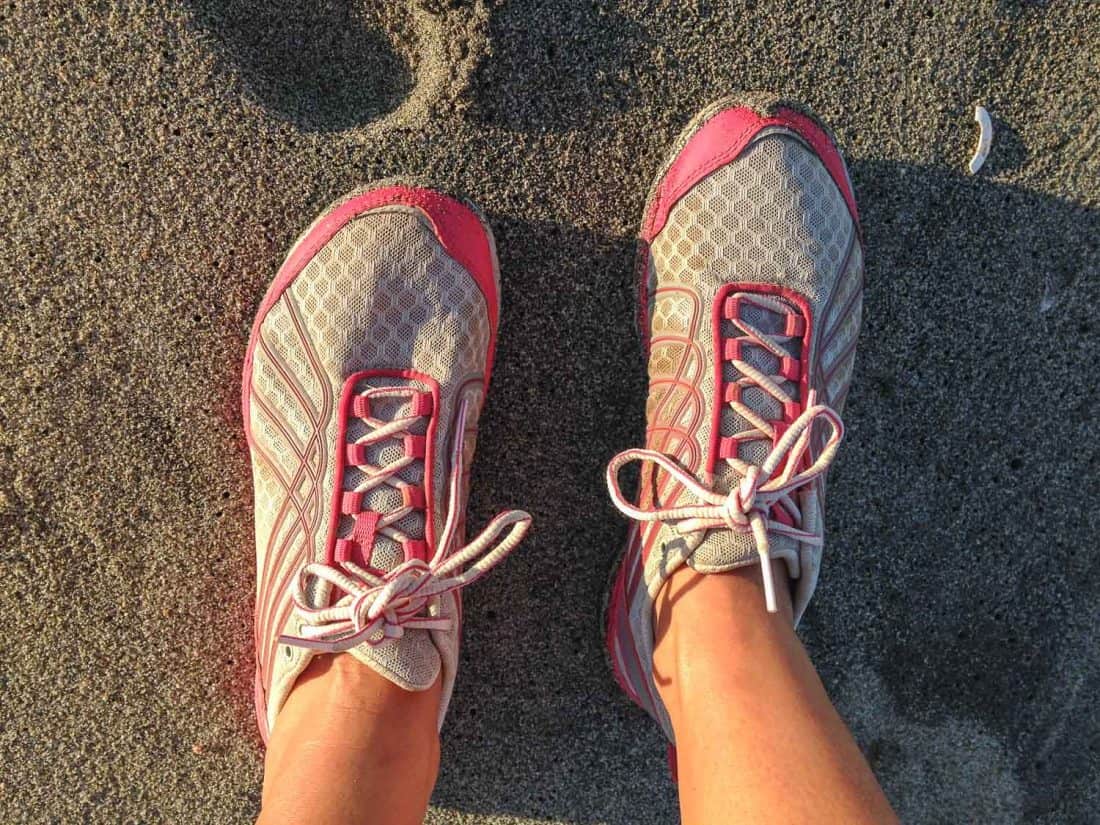
The challenge was running—I underestimated how slow the transition to minimalist shoes would be. Minimalist running shoes have thin, flat soles that force you to land on your fore or midfoot rather than your heel. This barefoot running style was made popular by Christopher McDougall’s book Born to Run (which is a great read), and proponents say it’s a more natural way to run that puts less pressure on your joints.
The problem is it’s difficult to adapt to this new style of running. The first time I ran three miles (5 km) in the Road Gloves I suffered severe calf pain for a week afterwards. My mistake was to run entirely on my forefeet and never let my heels touch the ground—quite a workout for the calves!
You need to transition very slowly to minimalist running shoes. There was no way I could continue my half marathon training in my new shoes, so I bought a cheap pair of trainers from Target to wear most of the time. After a run, I changed into the minimalist shoes and headed back out for another mile or so. I continued to slowly increase the mileage, and gradually got used to the new way of running without any aches. After six months I was able to run in them for four miles (6 km) and got rid of the Target shoes, as travelling with two pairs of trainers wasn’t ideal.
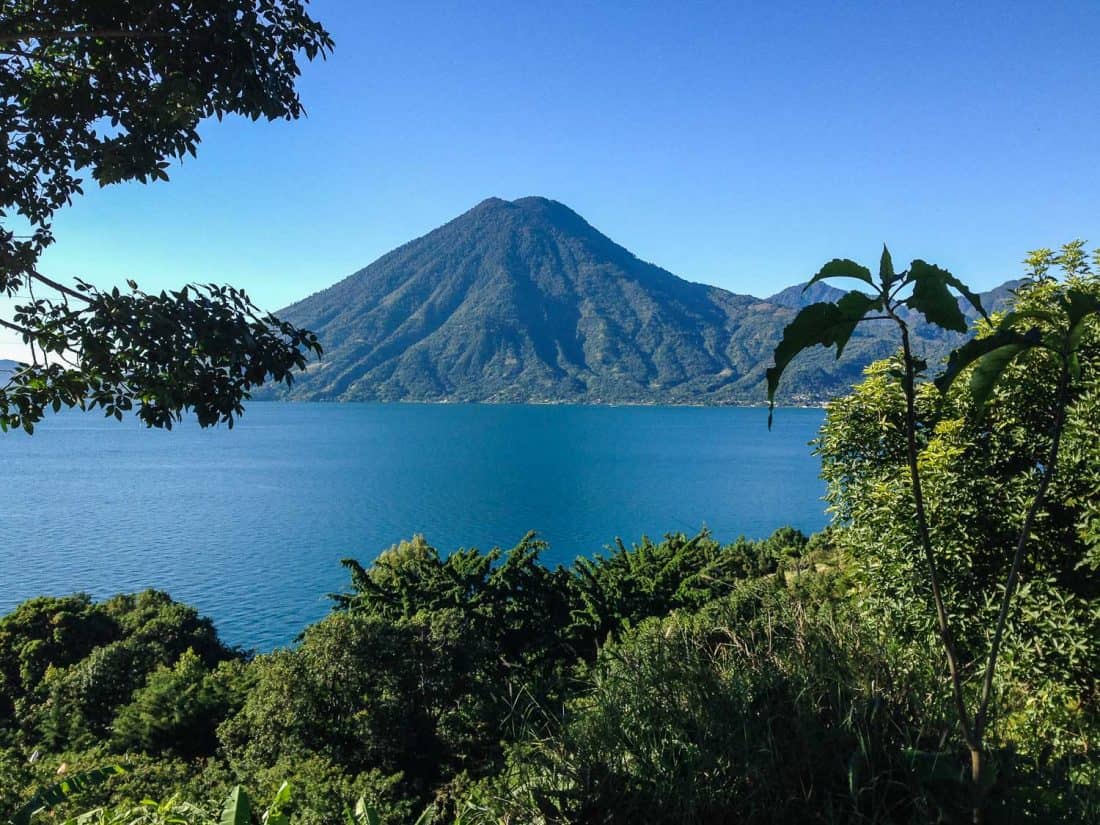
My goal was to return to running 10+ miles, but I found longer runs impossible in the minimalist shoes, as they still left me with aching calves. It’s a lengthy process; many runners say it takes a year or more to be able to run what you previously could in cushioned shoes. It’s easier to run in them on softer dirt trails, but when I’m travelling I don’t have much choice over where to run, and most of the time I end up on tarmac or concrete.
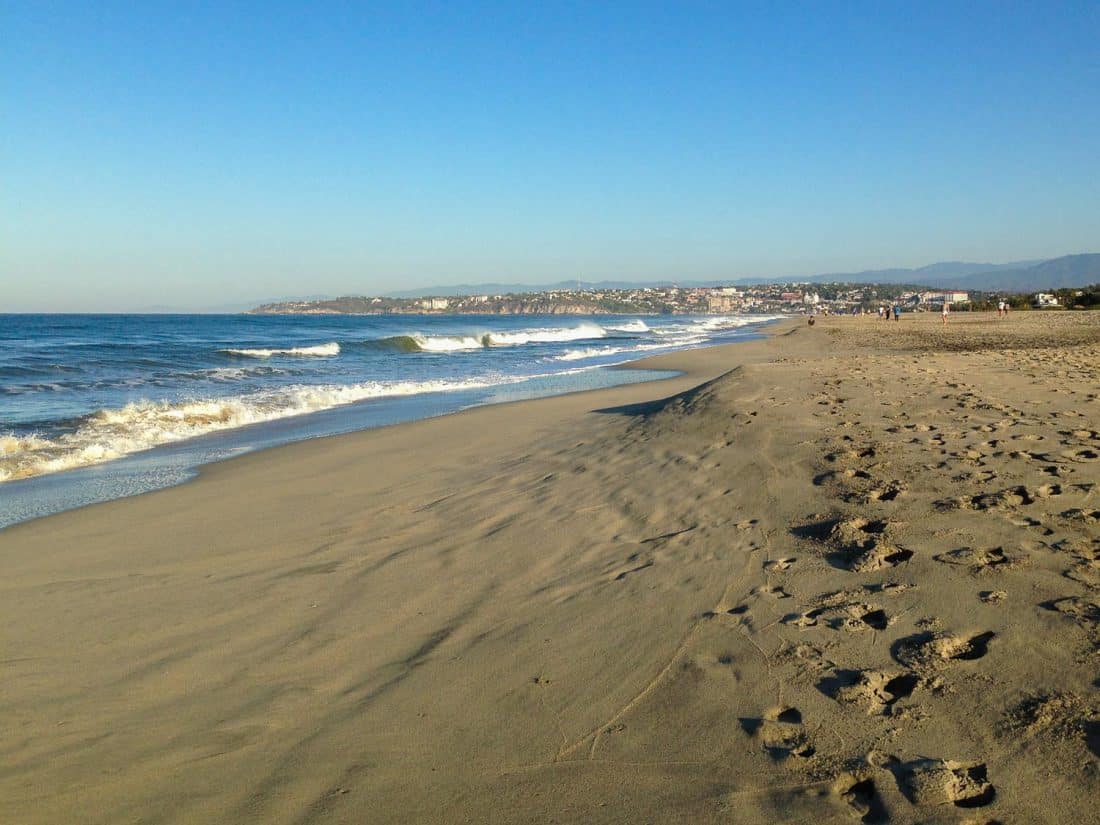
My Second Attempt
I didn’t want to give up on minimalist running shoes, as they are so practical for travel, so I tried the Merrell Mix Master Glide 2, which are still lightweight but have more cushioning than the Road Gloves. I was able to run longer distances (up to seven miles/ 11 km) in the new shoes without calf pain, but I suffered from painful shins which got worse over the following three months. I managed to run a 10 km race wearing them, but the balls of my feet were burning afterwards—there wasn’t enough protection for nearly an hour of running at faster speeds on tarmac.
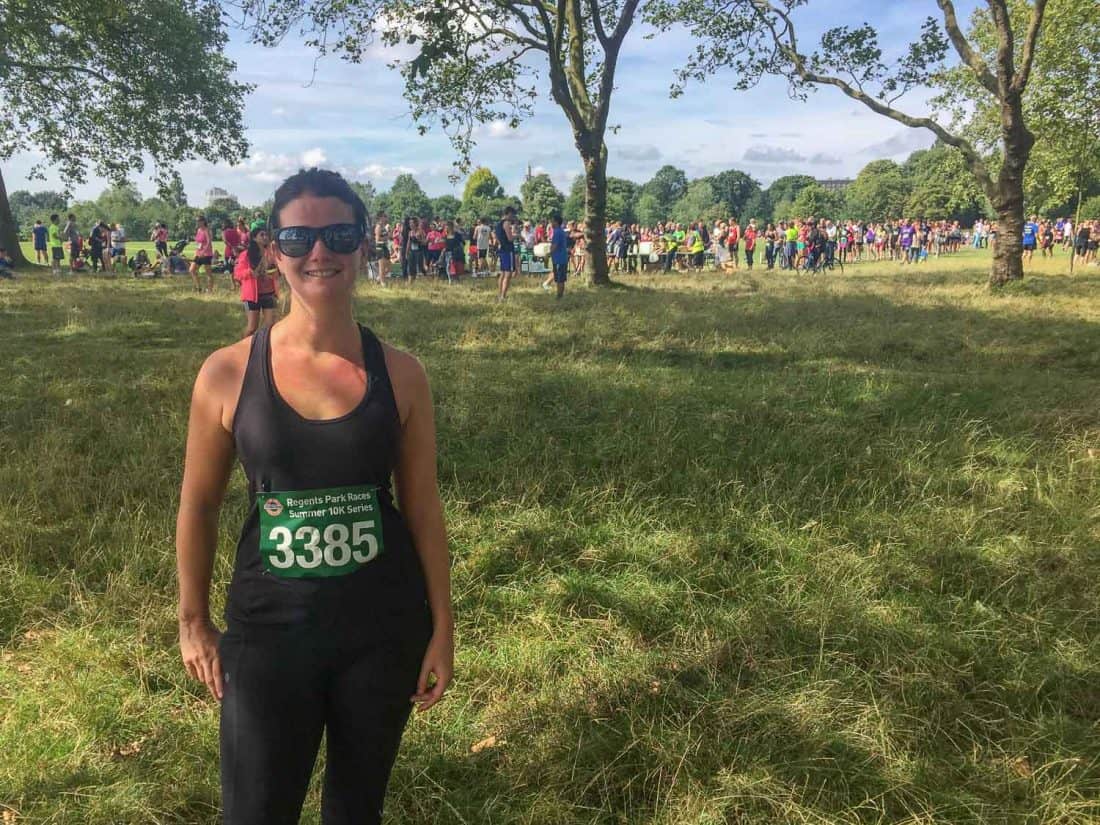
Giving Up
Ten months after I started, my experiment with minimalist running shoes was over. The transition was too slow and the injury risks were not worth it. While it was natural for humans to run without shoes thousands of years ago, they weren’t doing so on tarmac and concrete like we do. Switching to barefoot style running has helped many runners who were suffering from injuries in bulky cushioned shoes, but I didn’t have any problems until I made the switch. Other than a lighter backpack, I couldn’t see the point continuing down this path; it made running painful and stressful.
For the first time since I began running, I followed the conventional advice—I went to a specialist running shop, got fitted for shoes, and walked out with a pair of neutral, cushioned Asics Cumulus 17. They feel much more comfortable and my shin pain never returned. The one upside of my experiment is that despite my cushioned shoes, I now strike naturally with my forefoot, which is considered to create less strain than landing on the heel.
The lesson I learned is not to put travel above health when it comes to running. I chose running shoes based on their weight, appearance, and suitability for other travel activities, rather than what was best for my running. I’m now prioritising running and don’t let appearance be a consideration (in fact, I dislike my bright green and yellow shoes). My Asics may not be as small or light as my minimalist shoes, but they still fit in my backpack and are much better for their main purpose. Running has become fun again.

Should You Try Minimalist Running Shoes for Travel?
There’s no right answer to whether minimalist or conventional running shoes are better—you have to discover what’s right for you. If you do try minimalist shoes for running, be careful as it’s not something to rush into. The transition takes patience, and ideally, you’ll start before you travel so you can alternate with your existing shoes. It could work well for new runners, as you’ll be increasing your mileage gradually anyway and won’t have the problem I did of being too eager to run longer distances.
Minimalist Shoes for Non-Runners
Minimalist shoes can be great for travellers who don’t run but want a lightweight pair of trainers or sandals for short hikes and city walks. Getting used to walking will be an easier transition than running, but you should still start slowly and try them out before you travel.
Minimalist shoes that travellers recommend include New Balance Minimus Zero; Vivobarefoot and Lems, who make smart as well as athletic shoes; and Xero Shoes and Luna Sandals, who make barefoot-style sandals. You can read Expert Vagabond’s review of his Luna sandals, which he uses for running and short hikes.
The Carry-On Traveller Book is Now Available!
If you’d like to learn more about the best travel gear and how to travel with just carry-on luggage, my book, The Carry-On Traveller: The Ultimate Guide to Packing Light, is available for the Kindle or paperback on Amazon.
The book will help you pack light whether you are away for a week or a year (or six like us!). It includes the basic principles you can apply to any trip, how to choose your luggage, what to pack (including detailed packing lists), and how to pack (which is just as important).
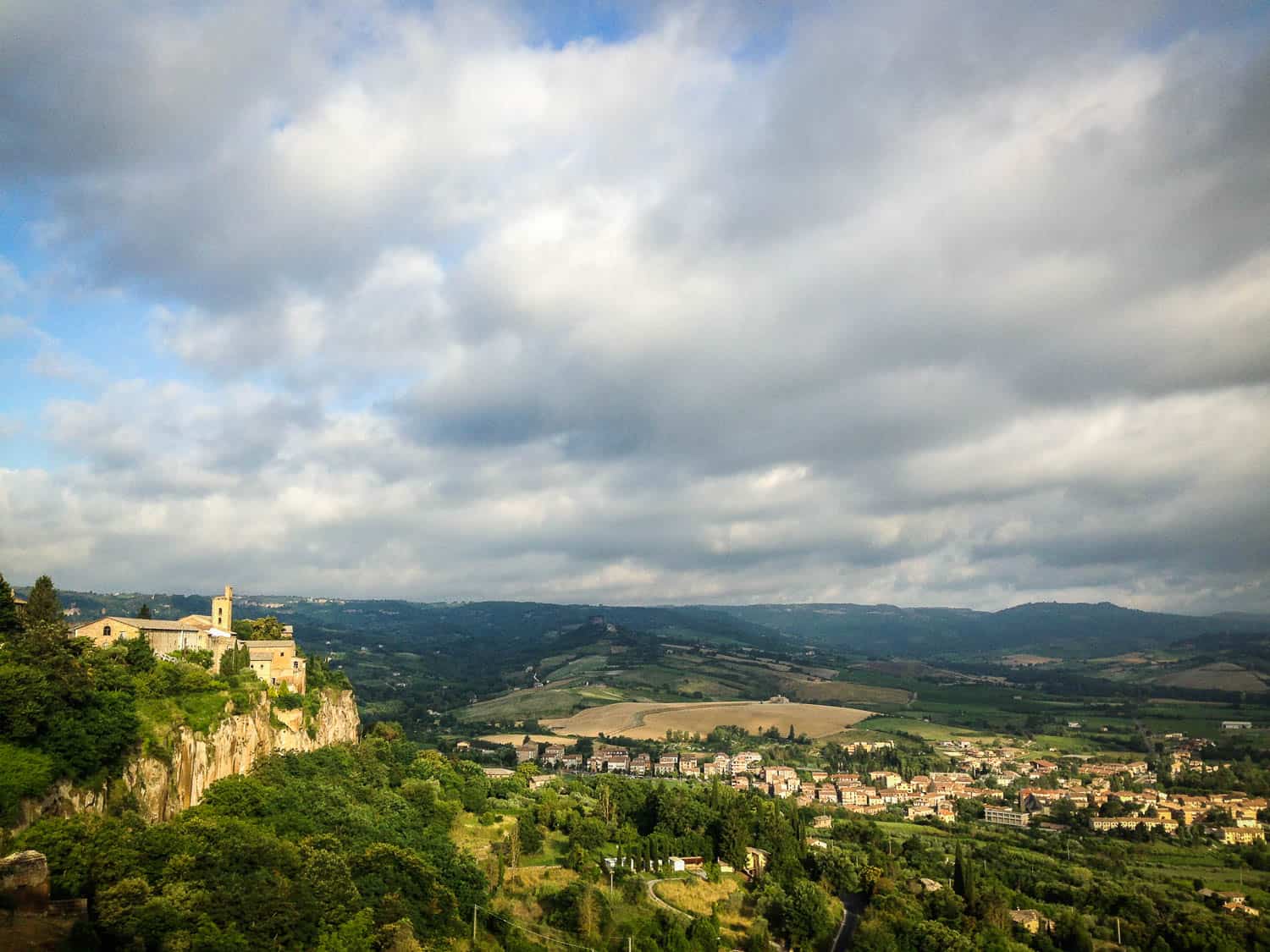
you are probably running wrong
check out Tony Riddle on natural running
https://www.youtube.com/watch?v=4zFvEBSTYx8&t=609s
Interesting post. My favorite sneakers for travel are the NIke Roshe run because of how much running technology they have within then without looking like a pair of trainers.
Interesting article and i love your shoes they are very cool
Thanks for sharing your evolving insights on running shoes and running while traveling. I now run every day in Brooks Cadence. These shoes and others like them aren’t strictly minimalist but have a lower heel drop (4 mm) and less padding than a standard running shoe. My feet sometimes feel sore after an hour + on asphalt, but I feel like I land more lightly and less jarringly. For me, it’s been a perfect balance plus lighter weight when traveling. You’re right about not compromising on shoes, though. Most people don’t need an incredibly built up shoe (also can be damaging), but everyone is different.
Glad you’ve found something that worked for you Marlene!
I tried to get back into running whilst travelling and like you went for a minimalist shoe as well at running on the front foot. Like you, I tried to combine the needs of a light-weight traveller with the needs of running – it didn’t work out. I tried the Nike Free and whilst they were ok for running they were so uncomfortable elsewhere. I couldn’t walk in them on all but the most spongy tarmac roads. Forget any gravel or rocky terrain. In the end, I had to pass them on. I’m going to try a trail shoe now as they are lighter, but who knows Such a shame trial and error can be so painful, and expensive!
It’s true they don’t give you much protection on rocky trails. It doesn’t bother some people but maybe it just takes a very long time to get used to it. Sorry your experiment didn’t work out either! Trail runners are a good option – that’s what I initially started travelling with and they worked well for hikes.
Although not a committed runner these days, I’ve no problem doing the occasional 5-10k. I do however walk a lot when I go travelling (it tends to work out at somewhere between 5 and 10 miles a day), and I’ve noticed my needs are very different in both cases. Note though I tend not to do any proper dedicated running while travelling – I keep the two separate.
For the last two years my walking shoe of choice has been the Xero minimalist shoe. Apart from one problem that may be a design feature or may alternatively be something weird about the way I walk (I end up wearing a hole through the rubber roughly underneath the balls of my feet after a few months), I find them incredibly comfortable and relaxing to wear, and have had no comfort problems at all. They’re absolutely fantastic to go travelling in, light, and don’t make my feet off – they’re also easy to slip off/on for temples and houses. And when I feel like living up to my name and backpacking barefoot in general, it’s no hassle to slide them onto the side of my trousers, between the fabric and my belt – don’t even need to pack them. Alternatively I’ve been known to roll them up and put them in my pocket, though that relies on me wearing cargo pants.
However I simply can’t run in them.
I don’t know what it is, whether it’s slightly incorrectly fitted, whether I need to modify my style, or what, I just find them ‘clunky’ and difficult to run in, and am always conscious that they might slip off. It feels a bit like running with my feet strapped to two small planks of wood. By ‘style’ it’s not a case of getting used to the minimalist bent – I don’t have the same trouble running completely barefoot (and indeed prefer to do so anyway, for short distances at least) – I think it’s just a psychological effect of running in footwear meaning I’m trying to get the Xero shoes to work in a way that they won’t.
Like you, I’ve also had the issue of burning calves, plus when I run completely barefoot I’ve been known to get weird blisters on the sides of my feet; the more I do the easier it’ll get but so far I’ve done more than about 5km barefoot – no half-marathons barefoot/minimalist yet! If I go running, most of the time I’ll be wearing some reasonably cheap trainers from a local sports store.
Thanks for sharing your experience. I found my minimalist shoes great for light hikes too. It’s just running that’s the problem – I don’t think I had the patience for the very slow transition. I can see the Xero shoe being great as a general travel sandal.
Interesting stuff – I’m not a regular runner, but I’ve been thinking of adding it to my exercise routine – at the moment I walk lots instead (with a spaniel pulling me along!). I’ve been thinking of minimalist shoes for when I finally head off on my own adventure, as I spend the warmer months mostly barefoot anyway and winters in thick woollen socks and moccasins (this is the north of Scotland, after all!).
One thing I do use is Sorbothane insoles – I injured my knee and hip many years ago and any kind of shock can cause painful debilitating flare-ups. A friend recommended these and I’ve not had an issue since – whether walking, running or playing sports. I use the ‘double strike’ ones, replacing the insoles in all my other footwear. I have been wondering whether the thinner, ‘full strike’ insoles would fit minimalist shoes and have yet to find an answer. I don’t know if you or any of your readers know whether this would work but, if anyone does, I’d be very interested in the answer.
Suppose I should say I don’t have any sort of affiliation with Sorbothane, they’re just one of those products that really helped me and I like to share this whenever I can – anything to save people a bit of unnecessary pain!
I’m very much looking forward to the book!
Alex
I’m not sure about the insoles but I don’t see why they wouldn’t work. The two pairs of minimalist shoes I tried were like normal trainers.